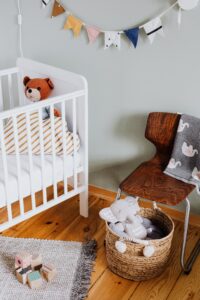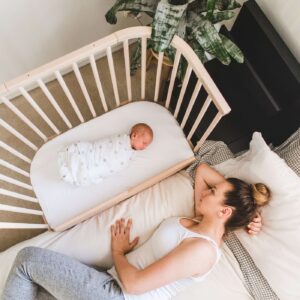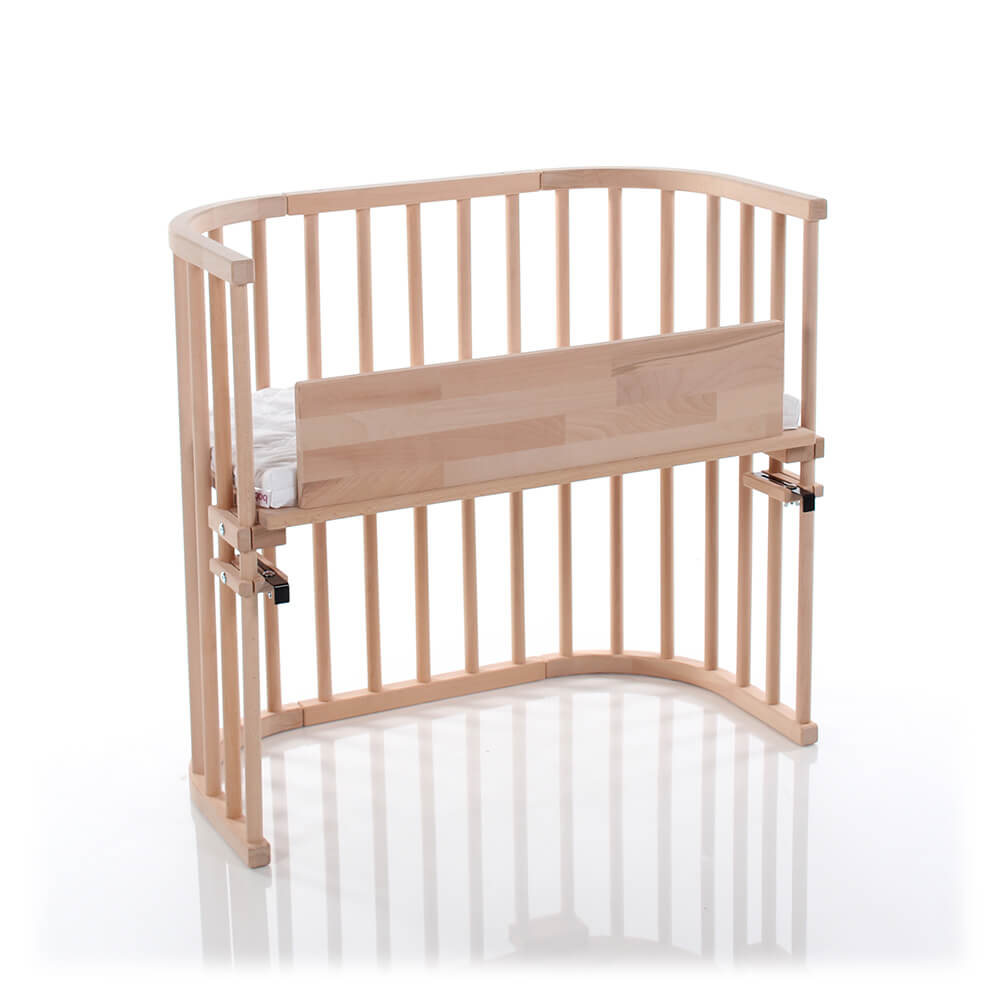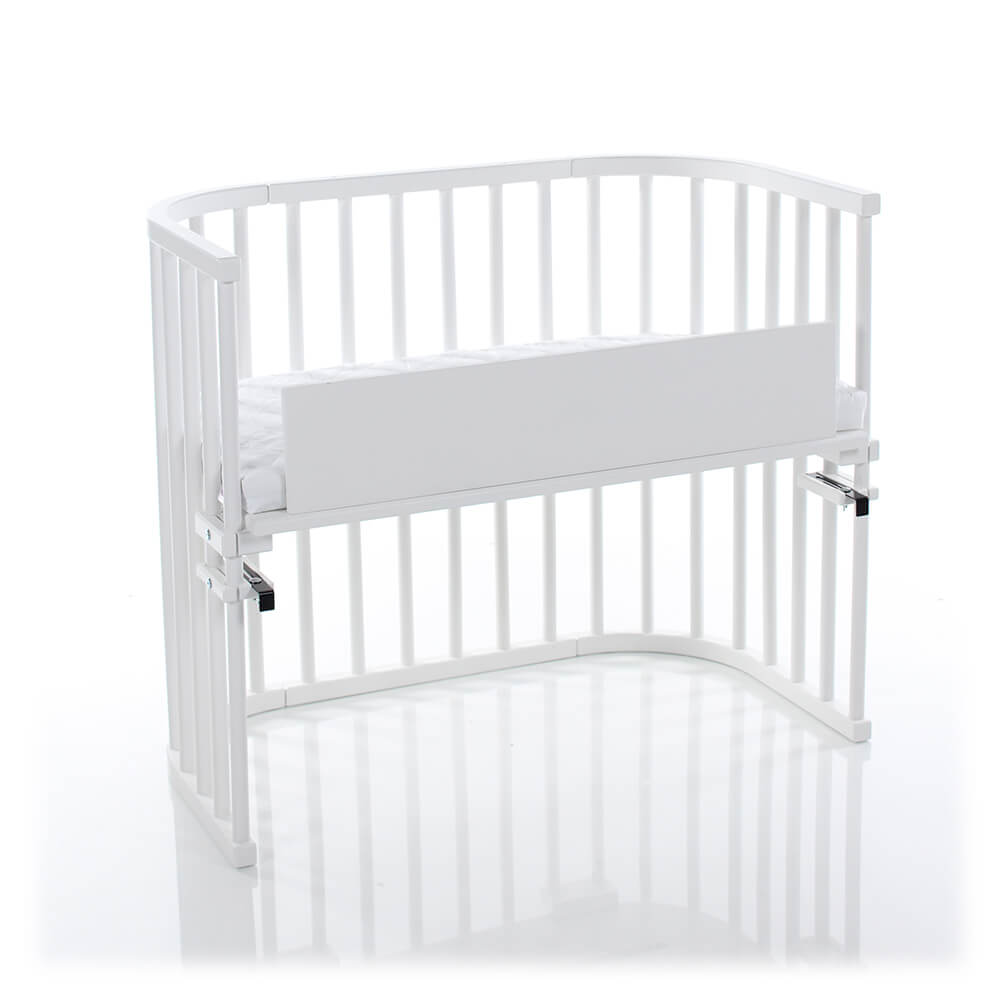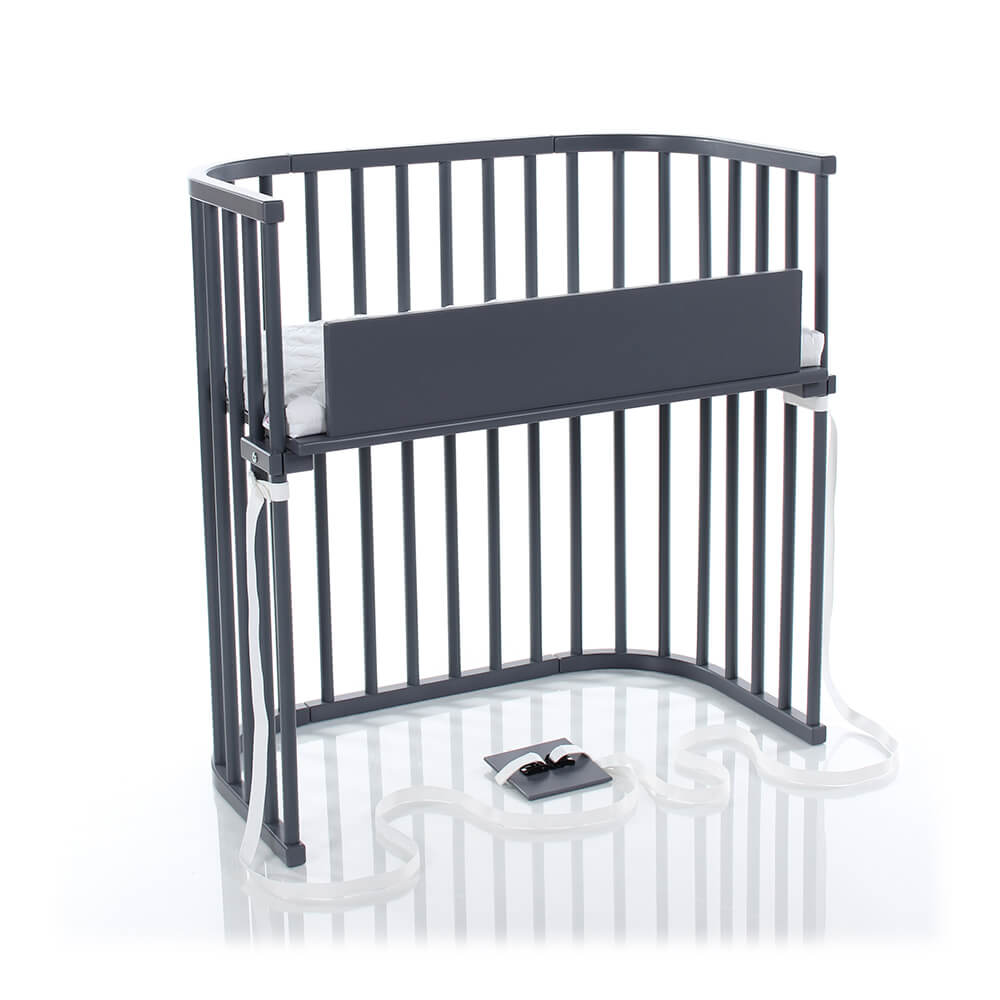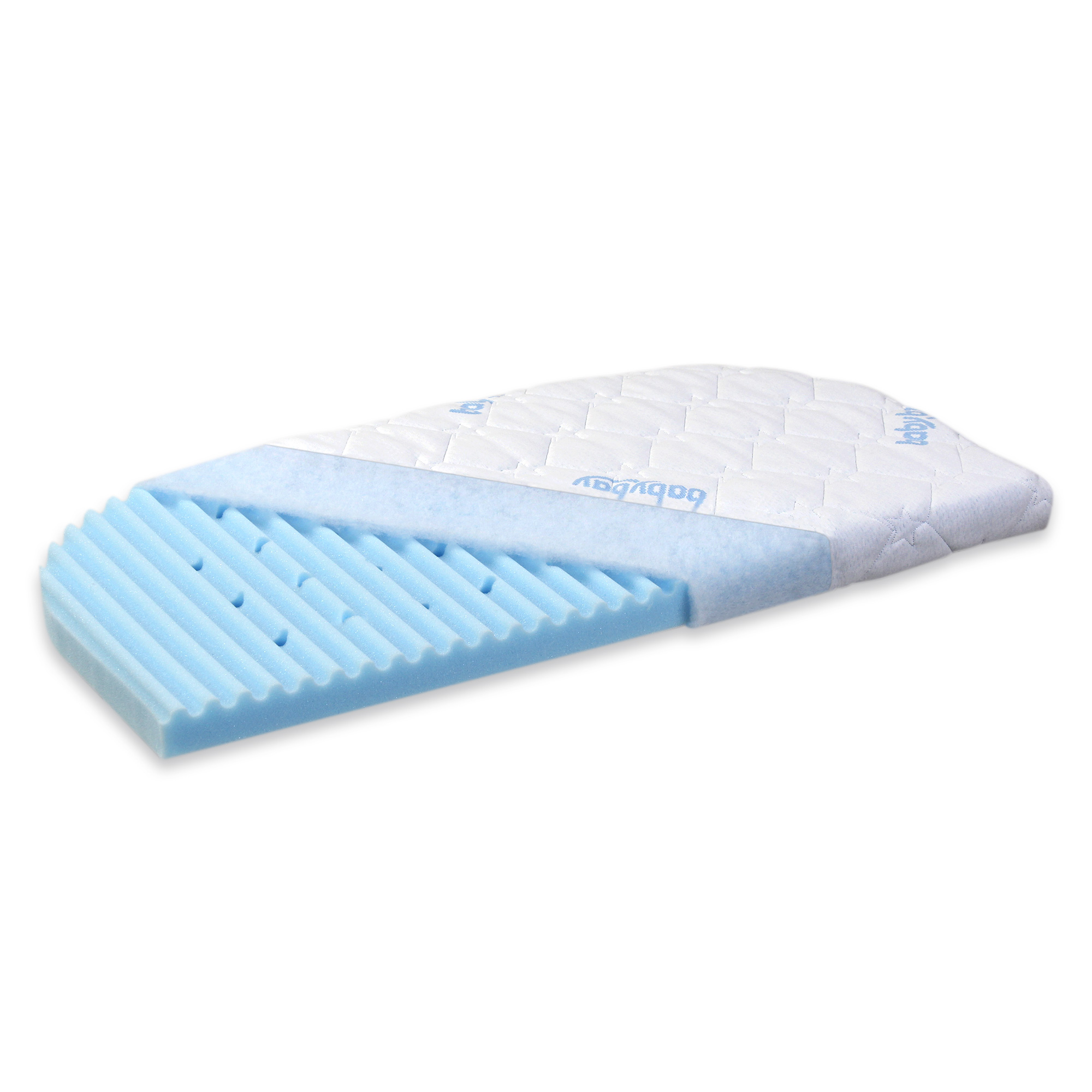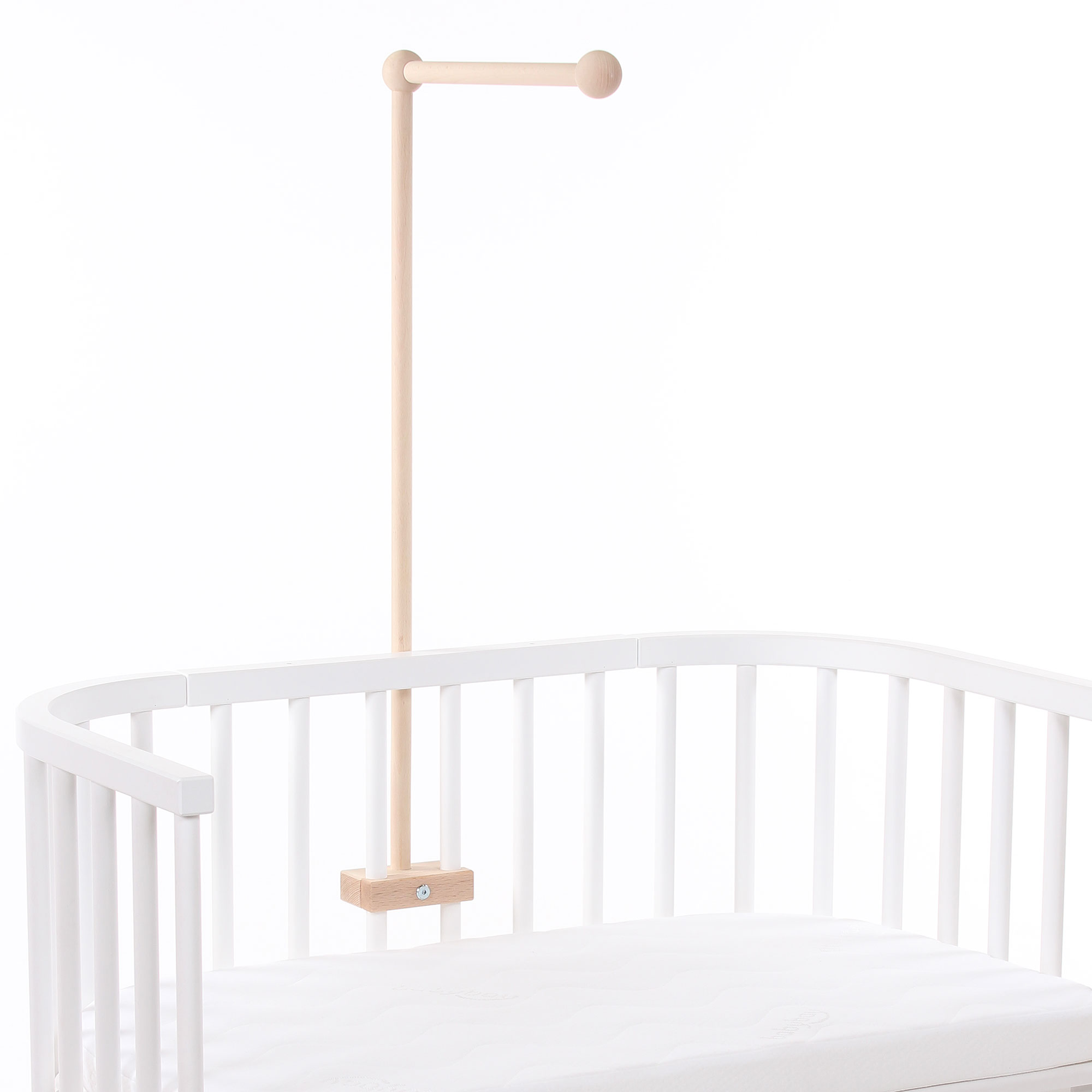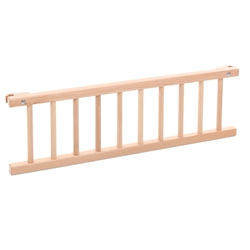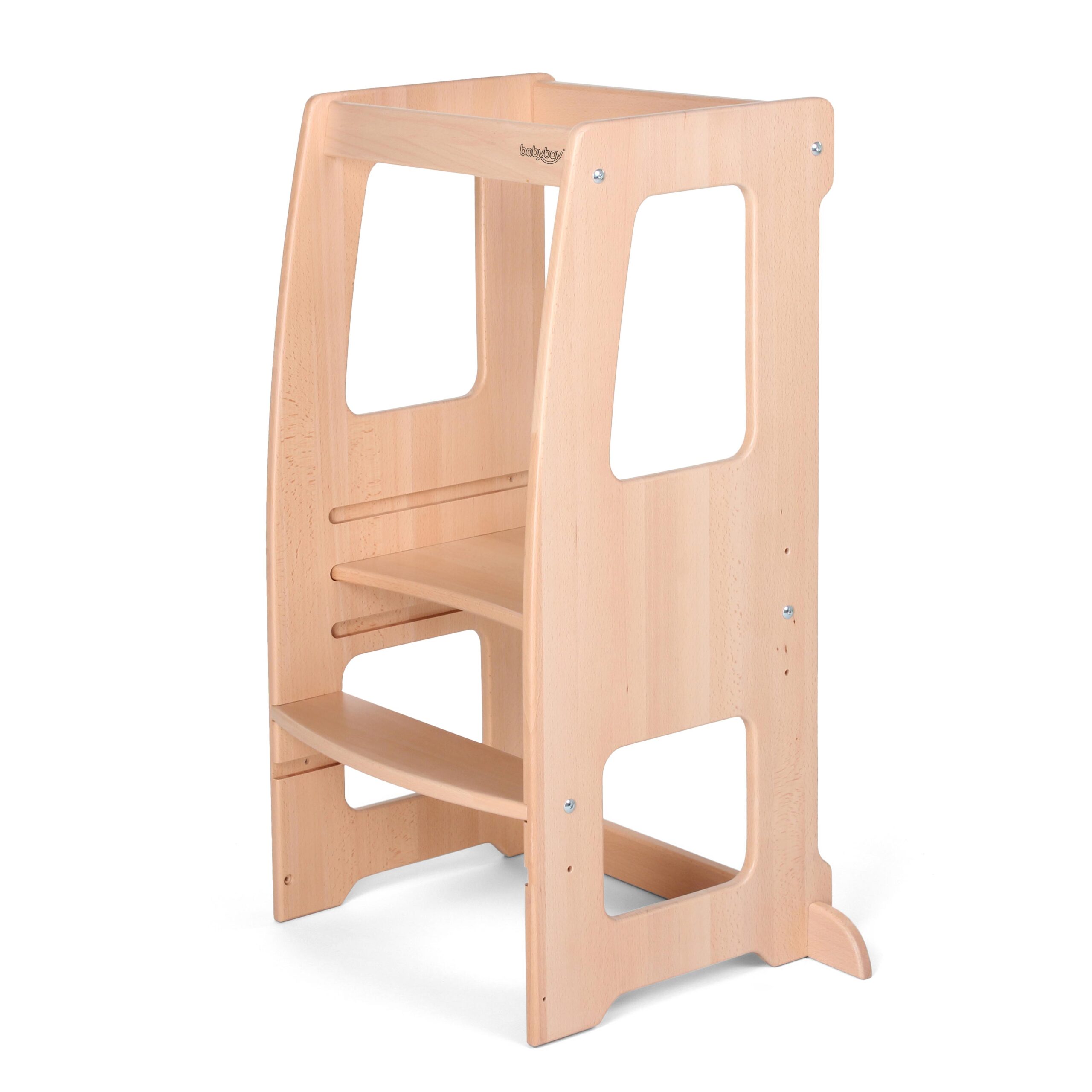Side bed bassinet, traditional crib, or convertible: there are plenty of crib types out there. And if you’re confused about what all the different types mean (or confused about how to find the best crib or best crib alternative for you and your family!), we don’t blame you at all. You’re definitely not alone on that front.
In fact, new parents or parents to a new little one often have a hard time choosing which type of crib to get.
Not because they don’t know what’s best for their baby. But because they want to support their baby’s nurturing and safe sleep…and aren’t sure which option is the best crib or best crib alternative to make that happen.
And though there’s no “right answer” to which type of baby gear will work best for your baby and family (only you can decide which type of crib best supports your unique needs), there are big benefit differences to each crib type that can make it easy to cut through the options and make a choice that you’ll be happy with for a long time coming.
Here’s our guide to the different types of cribs on the market, as well as a break down of what separates a traditional crib from other alternatives.
Stick around…because we’re about to tell you about the advantages you can expect from different models. So that choosing the right crib type is the easiest thing you do all day.
What is a Traditional Baby Crib All about?
When you think of a baby crib, you probably imagine a small sleeping space with guardrails or safety bars on all sides that keep your baby safe and in place throughout the night.
This might surprise you: but the modern version of a baby crib is actually a pretty recent invention.
Cradles and cribs were largely used to hold babies during the day. At night, parents would invite their baby to co-sleep, which was the dominant sleep practice for thousands of years (and still remains the standard for a majority of the world’s children, according to a survey done by anthropologist John Whiting).
By the 1950s, cribs were starting to take on their modern form. But with one big “but”: crib safety standards weren’t proposed until 1973, when the Food and Drug Administration finally set requirements for how the railings and sides of cribs should be designed.
These safety standards allowed cribs to move forward with a more unified design (the one you probably think of now when you hear the word “crib”).
Nowadays, these sleep spaces have a barred or latticed design, one that gives your baby security and the kind of made-just-for-them sleep space they need to grow comfortably. But it also puts distance between parent and baby, by departing heavily from the long history of parent and child sleeping in rhythm with one another.
How the Bedside Sleeper Came Onto the Scene
According to Smithsonian Magazine, the bedside sleeper (also sometimes called a co-sleeper) was invented around the 17th century as “probably the world’s first device designed for nighttime sleep.”
Originally called “arcuccio” or “arcutio” (which is Italian for “little arch”), the early version of the bedside sleeper was a half-barrel shape that awarded the mother all the benefits of co-sleeping (by easing nighttime nursing routines and making sleep easier for her and baby) while also providing a safe way for baby to sleep on a surface and mattress all their own.
Modern day co-sleepers or bedside sleepers have taken this long-ago design to new safety heights, with long-trusted organizations like ASTM International, TÜV Rheinland, and Confidence in Textiles giving models like the babybay a gold star for safety.
As an alternative to traditional crib models, a bedside sleeper is a baby bed designed to offer the best of both worlds by giving your baby a safe and nurturing place to sleep. One that also just so happens to be close and comfortable to you. (That parent-baby rhythm we were talking about before? That’s exactly the experience that a side bed bassinet was designed to give.)
Not only does this kind of close sleeping support baby (by boosting their immune system and contributing to their healthy development), it also helps parents take advantage of the many benefits of sleeping close to their little one.
Ones that parents enjoyed for millennia. And continue to enjoy around the world today.
Wait, How Is a Bedside Sleeper Crib Different From What You’ve Talked About Already?
Just like there are plenty of crib types out there, there are plenty of names that all describe the same type of crib.
Here are just a few of the names you might hear people use to describe a bedside sleeper:
- Side bed bassinet
- Bedside bassinet
- Co-sleeping bassinet
- Bedside crib
- Bedside sleeper crib
- Co-sleeper
- Bedside co-sleeper
All these names work to describe the same thing: a crib that is placed close to your bedside and lets your baby sleep just an arm’s reach away.
When it comes to choosing a crib type that works best for your family, the name is less important than the function and design.
No matter what you choose to call it, the best side bed bassinet will keep your baby feeling safe and secure in a mattress made just for them, while letting you quickly respond to every nighttime nursing call and crisis cry.
If you prefer the freedom of having a mobile option (which puts a new spin on this long-loved sleeping option for your baby’s nighttime sleeping space), you can get a bedside bassinet that can easily be turned into a portable bed. So that you can take advantage of all the benefits of co-sleeping while still easily moving your baby from the bedroom to the nursery during the day.
You’ve Mentioned Benefits. Is a Co-Sleeping Bassinet Really that different from a Bedside Crib for Baby?
There are two main things that set a bedside sleeper/co-sleeping bassinet and a more traditional crib apart from one another:
- Bars
- Distance
Many parents prefer the comfort of being able to sleep beside their baby without anything (not even bassinet bars!) separating them from their little one.
Though reaching over some crib bars might not sound like a big deal to some parents or parents-to-be, it can have a big impact on breastfeeding parents who find themselves having to get up every few hours during the night (with each trip making it harder and harder to get back to sleep themselves).
It can also greatly impact parents who are struggling to get sleep after c-section, and are finding it hard to reach over high bars multiple times during the night while still allowing their abdomen to heal.
It can even greatly impact parents who simply find themselves not wanting to to reach over awkward crib bars to cuddle or soothe your little one all night long. Or who would prefer to check that all is well with their little one (with a loving touch or moment of embrace) without having to walk across the room to do it.
So Then Which Baby Bed Should I Get? A Side Bed Bassinet? A Crib? Or…?
At the end of the day, only you know what works best for your family.
However, no matter whether you let your baby sleep in a crib all their own or opt for a bedside co-sleeper option, it’s important to find a baby bed that commits to your baby’s safety by prioritizing nontoxic, sustainable, and all-natural materials.
Because though the question “which type of baby bed should I get?” might be front of your mind right now, it’s important to think about the quality of the baby bed you choose once you get to the “shopping” phase.
Though it can be hard to hear, your most-loved baby product and baby gear is likely made with harmful glues, toxic sealers, and other chemicals that can harm your baby and lead to health risks. Seeking out a company that prioritizes your baby’s full safety and health (while also focusing on expertly-engineered ways to keep your baby safe and comfy through the night!) can help you avoid concerns that arise when your baby is exposed to toxic and harmful materials.
So that your baby can rest easy every night while sleeping in their side bed bassinet or baby crib (no matter which you end up choosing!)…and you can rest easy too.


